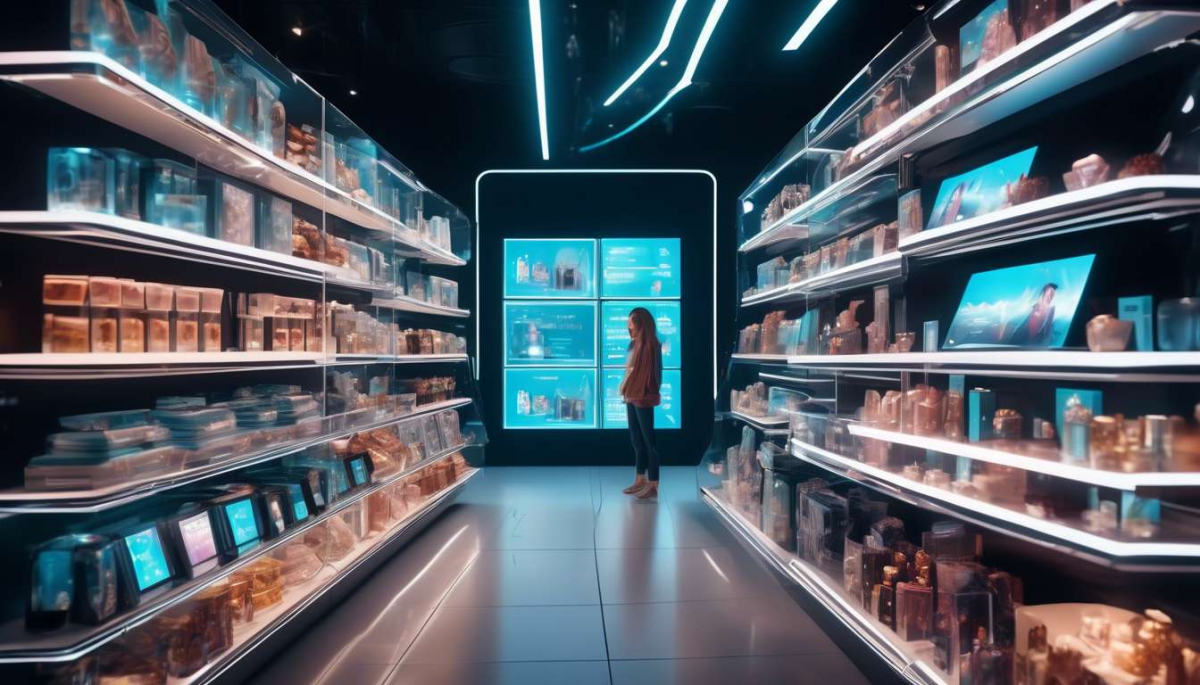In an increasingly competitive retail environment, guiding consumers to discover the ideal products in-store is paramount for enhancing customer satisfaction and driving sales.

This process involves:
- Understanding consumer preferences and behaviors
- Leveraging strategic merchandising techniques
- Utilizing advanced technologies
By creating an engaging and intuitive shopping experience, retailers can:
- Influence purchasing decisions
- Foster brand loyalty
Integration of Key Elements:
-
Personalized Recommendations:
- Tailor suggestions based on individual preferences
-
Interactive Displays:
- Engage customers with dynamic product information
-
Seamless Navigation:
- Help shoppers efficiently locate and evaluate products
Moreover, the use of data analytics and customer feedback provides deeper insight into consumer trends. This enables businesses to:
- Tailor their offerings
- Optimize inventory management
This article explores various strategies and tools that retailers can employ to assist consumers in identifying the perfect products. Ultimately, these efforts enhance the overall shopping journey and build lasting customer relationships.
For a more detailed exploration of these strategies, read more on this page.
Consumer Preference Analysis
Consumer preference analysis identifies patterns in purchasing behavior to better understand what drives customers’ choices. By examining these preferences, businesses can align their offerings with consumer behavior patterns, enhancing customer satisfaction and fostering a sense of community among patrons.
This analysis enables companies to tailor personalized recommendations, making customers feel valued and understood, thereby increasing loyalty and repeat purchases. Personalized recommendations not only improve the shopping experience but also build a strong connection between the consumer and the brand.
Inventory Management Benefits:
- Consumer preference analysis plays a crucial role in effective inventory management.
- By understanding the products that resonate most with customers, businesses can:
- Optimize stock levels
- Reduce excess inventory
- Minimize stockouts
- This ensures that popular items are consistently available, meeting customer expectations and reinforcing their trust in the brand.
Efficient inventory management driven by consumer behavior insights allows businesses to allocate resources effectively, leading to cost savings and improved operational efficiency.
Ultimately, consumer preference analysis is vital for creating a harmonious shopping environment where customers feel a sense of belonging.
Merchandising Strategies
Effective merchandising strategies capitalize on consumer insights to enhance product visibility and drive sales. Understanding consumer behavior is crucial in crafting these strategies, which aim to meet consumer needs and foster a sense of belonging within the shopping environment.
By analyzing consumer behavior, retailers can anticipate trends and preferences, allowing for the development of personalized recommendations that resonate with shoppers. These recommendations not only improve the shopping experience but also encourage repeat visits and brand loyalty.
Implementing efficient inventory management is essential in supporting these merchandising efforts. Proper inventory management ensures that:
- Products are always available
- The likelihood of stockouts is reduced
- Customer satisfaction is enhanced
Additionally, it allows retailers to strategically position products, optimizing store layout to highlight key items and maximize exposure.
A well-organized store layout, informed by consumer insights, creates an inviting atmosphere that promotes exploration and discovery.
By aligning merchandising strategies with consumer behavior and effective inventory management, retailers can create a shopping experience that fulfills consumer expectations and drives business success.

Technology Integration
Integrating cutting-edge technology in retail operations streamlines processes and enhances the overall shopping experience.
Understanding consumer behavior allows retailers to tailor personalized recommendations, ensuring that shoppers find products aligning with their preferences. Technology enables the analysis of shopping patterns, which can be harnessed to:
- Anticipate consumer needs
- Improve customer satisfaction
By implementing smart systems, retailers can foster an environment where consumers feel understood and valued, promoting a sense of belonging within the store.
Advanced inventory management systems play a crucial role in this integration, ensuring that products are always available to meet consumer demand. By employing:
- Real-time tracking
- Automated restocking
Retailers can minimize stockouts and overstock situations, optimizing the supply chain. This efficiency not only benefits retailers but also enhances the consumer experience by ensuring desired products are readily accessible.
The synergy between understanding consumer behavior and utilizing technology for inventory management creates a seamless shopping journey, further solidifying consumer loyalty and fostering long-term relationships.

Data Analytics Utilization
Data analytics empowers retailers by uncovering actionable insights from vast amounts of consumer data. Understanding consumer behavior is crucial for creating a shopping experience that fosters trust and loyalty.
By analyzing purchasing patterns and preferences, retailers can offer personalized recommendations that resonate with individual customers. This tailored approach not only enhances customer satisfaction but also strengthens the relationship between consumers and the brand.
Effective inventory management is another critical area where data analytics proves invaluable. By predicting demand based on historical data and current trends, retailers can optimize stock levels, reducing the risk of overstocking or stockouts.
This efficiency ensures that consumers find the products they desire when they visit the store, reinforcing their sense of belonging and satisfaction.
Incorporating data analytics into retail operations allows retailers to:
- Anticipate market shifts
- Adapt swiftly to changes
By doing so, retailers can craft an environment where consumers feel understood and valued, ultimately driving success and fostering a loyal customer base.